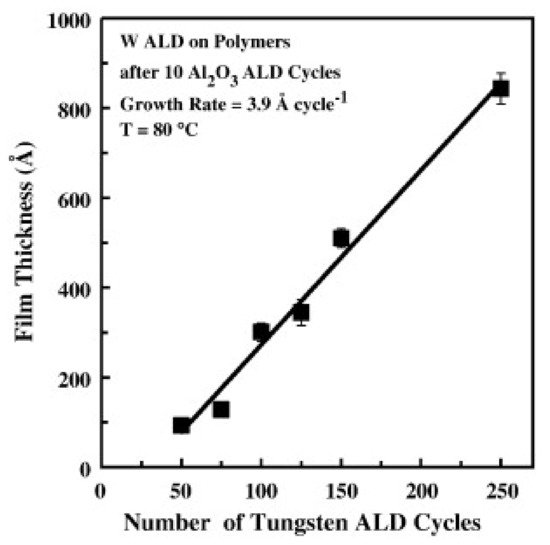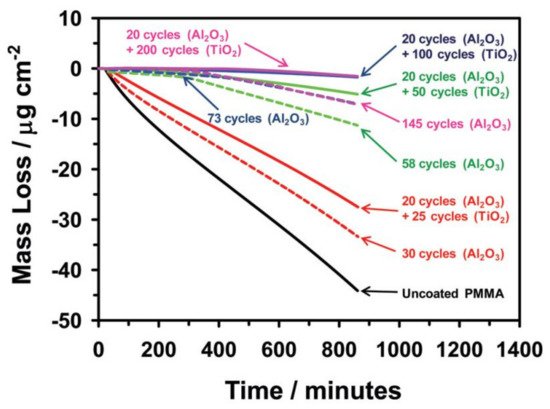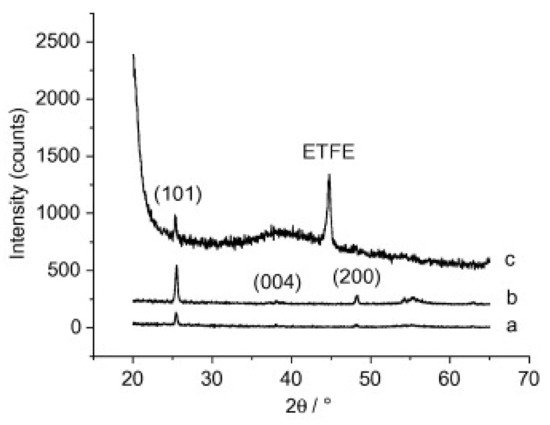Poly (methyl methacrylate) (PMMA) is a thermoplastic synthetic polymer, which displays superior characteristics such as transparency, good tensile strength, and processability.
1. Introduction
Poly (methyl methacrylate) (PMMA) is a transparent thermoplastic synthesized by emulsion polymerization, solution polymerization, and bulk polymerization from the MMA monomer
[1]. This acrylate has high resistance to sunlight exposure and good optical properties, widely used to substitute and enhance the glass performance
[2]. This polymeric compound is attractive; hence is stable, affordable, has been explored in multiple structural and forms—like sheets, films, tubular, even spherical composites—from nanotechnology to upper metrics/scales with variety being applied in all kinds of industries
[3][4]. One of the main advantages of PMMA is that it contains less potentially harmful subunits from the synthesis, like bisphenol-A, commonly found in other types of polymers such as polycarbonates, polysulfones, and epoxy resins
[5]. It is a superior polymeric material for analytical separation, sensing
[6], biomedical and medical applications due to biocompatibility
[7][8], and is used for electrolysis
[9], polymer conductivity, viscosity measurements
[10][11], solar nano/micro concentrator lens for solar cells
[12][13][14]. In practice, the PMMA surface properties can be tailored by surface modification through graft copolymerization
[15] or by the incorporation of a surfactant into the polymer matrix
[16].
2. ALD Coatings on PMMA Aided by Seed Layer
The literature above presented demonstrated that PMMA is a viable polymer material for ALD coating process. However, the requirement of a low deposition temperature due to its low Tg raises another limitation: the known ALD precursors for thin film formation at low temperatures are very limited. A solution can be the use of seed layers.
Wilson et al. reported on W deposition on polymers by ALD and their results showed that W nucleation was enhanced by a few previous cycles of Al
2O
3 by ALD. In this case, Al
2O
3 acts as a seed layer of nucleation on a variety of spin-coated polymers such as PMMA, polyvinyl chloride (PVC), polystyrene (PS), polypropylene (PP), and polycarbonate (PC). A growth per cycle (GPC) of 3.9 Å for W ALD at 80 °C has been attained, as shown in
[17].
Figure 1. Profilometry measurements of W ALD film thickness on different polymers vs. the number of W ALD cycles. Al
2O
3 ALD was used as a seed layer (10 ALD cycles) (reprinted from
[17], Copyright (2008), with permission from Elsevier).
Minton et al. followed the same strategy in terms of using Al
2O
3 ALD seed layer prior to TiO
2 ALD, because TiO
2 did not nucleate well on the PMMA surface. Their results showed that the uncoated PMMA lost a considerable part of its mass, when exposed in vacuum to UV radiation and the bilayers formed with 20 cycles of Al
2O
3 and 100 or 200 cycles of TiO
2 were efficient in preserving PMMA ()
[18].
Figure 2. Mass loss of uncoated and coated PMMA with Al
2O
3 and Al
2O
3/TiO
2 when exposed to vacuum UV radiation over time (reprinted with permission from
[18], Copyright (2010) American Chemical Society).
Kemell et al. also explored the ability of ALD coatings of Al
2O
3 and TiO
2 on PMMA films, among other polymer films, like polyether ether ketone (PEEK), polytetrafluoroethylene (PTFE), and ethylene tetrafluoroethylene (ETFE)
[19]. The deposition temperature range was from 80 to 250 °C, enabling the synthesis of amorphous and crystalline metal oxides. Firstly, amorphous Al
2O
3 was deposited at 150–250 °C followed by TiO
2 deposited at 100 °C. For the case of TiO
2 deposition on Al
2O
3-coated PMMA at 250 °C, polycrystalline anatase TiO
2 films were obtained, as shown in These results highlight the importance of Al
2O
3 seed layer, or interlayer, prior to TiO
2. In fact, TiO
2 deposition on bare PMMA was attempted also at 250 °C, but virtually no growth was observed, revealing that TiO
2 does not nucleate well on PMMA. Interestingly, the authors did not point out any constraints of the polymer’s thermal stability when deposition at 250 °C, in particular regarding PMMA stability.
Figure 3. XRD patterns of anatase TiO
2 films in substrates made of (
a) Si at 200 °C, (
b) PMMA at 250 °C, and (
c) ETFE ate 200 °C. Si substrate was used as a reference, for comparison purpose (reprinted from
[19] Copyright (2008), with permission from Elsevier).
An identical approach was performed by Napari et al. Authors reported on the influence of the deposition of an Al
2O
3 seed layer to the ZnO film growth, morphology, and crystallinity, on PMMA commercial plates and spin-coated PMMA films on Si substrate. The Al
2O
3 seed layer provides a pathway for blocking the DEZ precursor into the PMMA subsurface and improves the ZnO growth with some degree of hexagonal crystal orientation at low deposition temperature viz 35 °. The ZnO surface wetting properties were altered upon UV illumination. As a consequence, this photoinduced changes on the wettability find applications in microfluidics, where thin functional coatings on patterned polymer platforms can be used to manipulate the fluid flows
[20]. This work is a promising alternative for lab-on-a-chip technologies development and microfluidics platforms.



